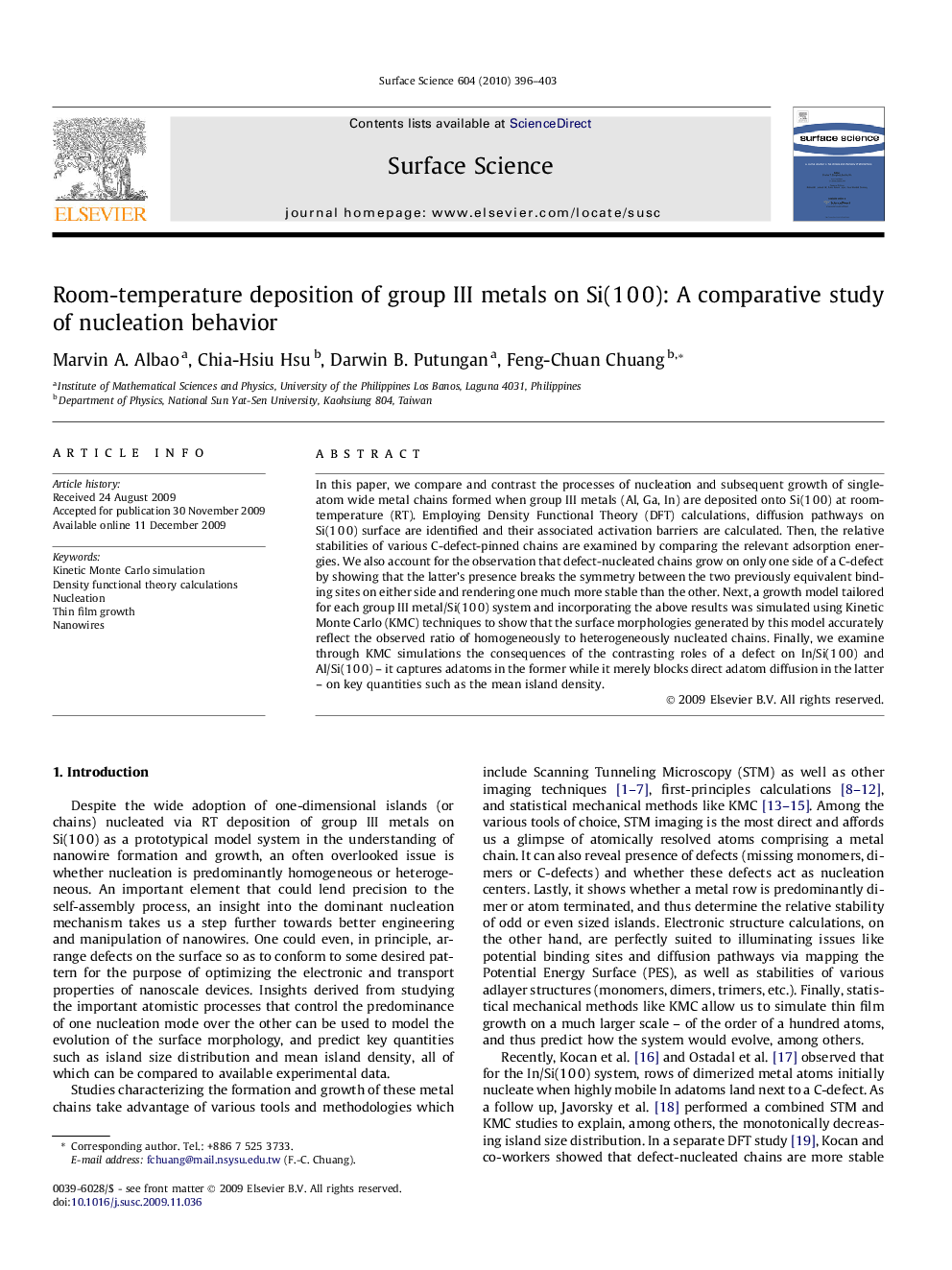| Article ID | Journal | Published Year | Pages | File Type |
|---|---|---|---|---|
| 5424141 | Surface Science | 2010 | 8 Pages |
Abstract
In this paper, we compare and contrast the processes of nucleation and subsequent growth of single-atom wide metal chains formed when group III metals (Al, Ga, In) are deposited onto Si(1Â 0Â 0) at room-temperature (RT). Employing Density Functional Theory (DFT) calculations, diffusion pathways on Si(1Â 0Â 0) surface are identified and their associated activation barriers are calculated. Then, the relative stabilities of various C-defect-pinned chains are examined by comparing the relevant adsorption energies. We also account for the observation that defect-nucleated chains grow on only one side of a C-defect by showing that the latter's presence breaks the symmetry between the two previously equivalent binding sites on either side and rendering one much more stable than the other. Next, a growth model tailored for each group III metal/Si(1Â 0Â 0) system and incorporating the above results was simulated using Kinetic Monte Carlo (KMC) techniques to show that the surface morphologies generated by this model accurately reflect the observed ratio of homogeneously to heterogeneously nucleated chains. Finally, we examine through KMC simulations the consequences of the contrasting roles of a defect on In/Si(1Â 0Â 0) and Al/Si(1Â 0Â 0) - it captures adatoms in the former while it merely blocks direct adatom diffusion in the latter - on key quantities such as the mean island density.
Keywords
Related Topics
Physical Sciences and Engineering
Chemistry
Physical and Theoretical Chemistry
Authors
Marvin A. Albao, Chia-Hsiu Hsu, Darwin B. Putungan, Feng-Chuan Chuang,
